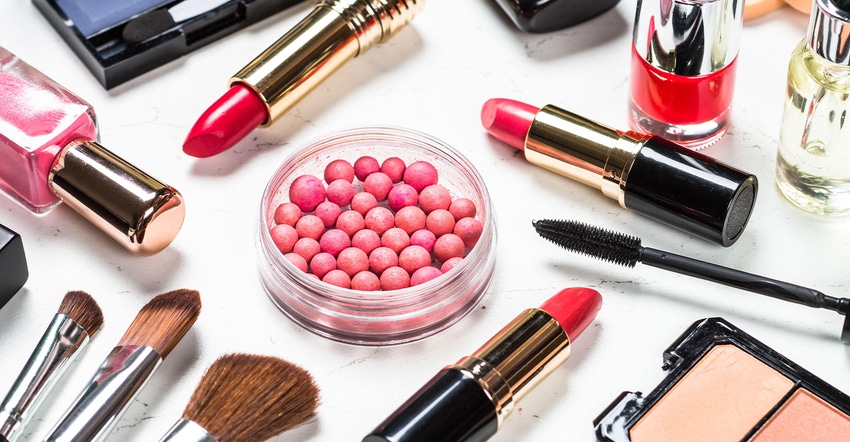Is Clean Beauty a Real Thing?
CleanHub, a company that addresses plastic waste, has a new study reporting that the topic CleanBeauty garnered over 2.1 billion views on TikTok and 6.3 billion tags on Instagram by October 2023, with younger generations especially gravitating to these platforms and similar outlets for user-generated content about what matters to them.

The multibillion dollar “clean beauty” industry has seen a growth spurt in recent years and will increase by another 14 percent in the next decade, projects InsightAce Analytic, a market research firm. Gen Z and Millennial consumers are the ones driving this movement, say researchers who follow buyer trends. But what does clean beauty mean?
It’s hard to pin down a true definition as there are no legal guidelines around the term’s use. Cosmetics and personal care product makers can make the promise of clean beauty if they want, and they do it with the intention of selling their products as safe for people and for the environment.
They are said to be free of toxins, to be labeled with transparency around ingredients, and for those ingredients to be sustainably sourced.
Apparently, people care about these specifications. CleanHub, a company that addresses plastic waste, has a new study reporting that the topic CleanBeauty garnered over 2.1 billion views on TikTok and 6.3 billion tags on Instagram by October 2023, with younger generations especially gravitating to these platforms and similar outlets for user-generated content about what matters to them.
And they aren’t just concerned about the ingredients they put on their faces, bodies, and hair or where those ingredients come from. Many CleanHub survey respondents – there were 523 of them between ages 18 and 65—say they also care about the materials that hold the products. Nearly half of respondents (47 percent) said they would pay more for goods that come in sustainable packaging. When asked what packaging materials they'd prefer, they responded: recyclable plastic (47 percent), refillable containers (40 percent), glass (39 percent), biodegradable plastic (36%), paper and cardboard cartons (35%), and organic packaging (30%).
Consumers also want more informative messaging and for brands to take the lead as motivators. Almost three-quarters (72%) want to know how brands are preventing their products from ending up in oceans or landfills; 69% said brands should take "a more active role in promoting eco-conscious behavior among their customers."
With consumers’ heightened awareness and interest in “green” products, brands need to work harder to gain trust, and they should begin by being an open book, says Nikki Stones, vice president of marketing at CleanHub.
Consumers want brands to share more about their business values and practices, and how their products are made/sourced. By being transparent and clear about their sustainability commitment, brands give consumers what they want—the power to make informed and conscious choices, Stones says and gives this advice: “Tell the full story. Talk about successes and challenges equally, and how you aim to improve in areas you’re still working on.”
The problem is, as more cosmetic brands make sustainability claims, it’s harder to identify which ones are true to their word, especially with lacking regulation around their marketing practices.
With this trend comes rising skepticism about promises made. Industry advisors say brands should pay mind to consumers who are on high alert for greenwashing by backing up data; routinely sharing reports; and showing their practices align with industry standards.
Companies that are truly listening to shoppers have come up with innovative ways to do business. One example is Sunday Riley, a certified B Corp company that not only uses natural ingredients but is keeping its trash at bay and supporting a circular economy by turning its natural byproducts into animal food supplements and natural fertilizers.
Origins is among a slowly rising number of brands that only use toxic-free ingredients. The company commits to planet-friendly practices such as investing in the planting of over 2.3 million trees and packaging that is recyclable, refillable, reusable, recycled, or recoverable.
UpCircle also uses 100% recyclable packaging, repurposes ingredients, and offers refills on most of its products.
But the industry as a whole does not score a glowing report.
A great many products contain palm oil, considered good for skin, but often sourced from palm oil plantations around Southeast Asia, which contributes to deforestation, jeopardizes the habitats of endangered wildlife, and generates emissions. Ingredients like argan and shea found in “clean” products are also overharvested, depleting natural resources. All totaled, 18 million acres of forest disappear each year to feed the cosmetics industry, according to CleanHub.
And while many brands are ditching parabens, phthalates, and other ingredients that have been called on the carpet, they still use unclean chemicals that slip under consumers’ radar, whether to plump lips, thicken eyelashes, or make hair shine.
Packaging remains for the most part an unanswered problem. The beauty industry generates about 120 billion units of plastic packaging a year, reports CleanHub. Shampoo bottles alone are an environmental drain; about 552 million of them pile up on landfills each year, according to the Washington Post. And since they are filled with water, they require more packaging; some innovators have shifted to shampoo bars and other compact, solid products, which require little to no casing.
Some industry experts who watch for trends – both in consumers’ behavior and brands’ behavior—say if more people chose to break away from these products, the industry will likely follow.
About the Author(s)
You May Also Like




